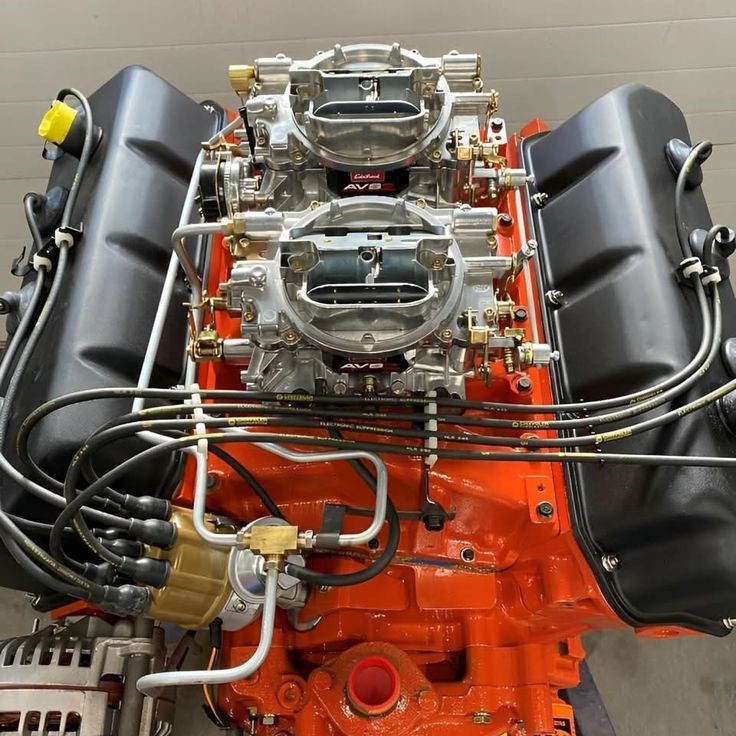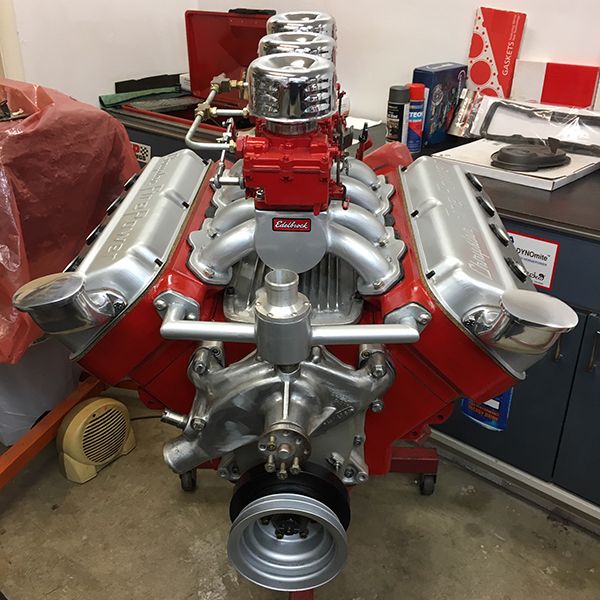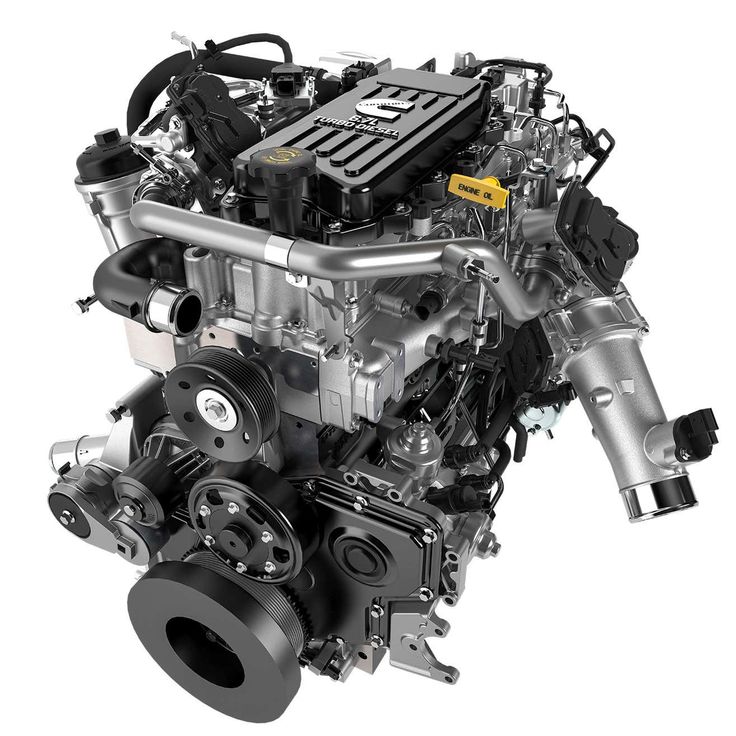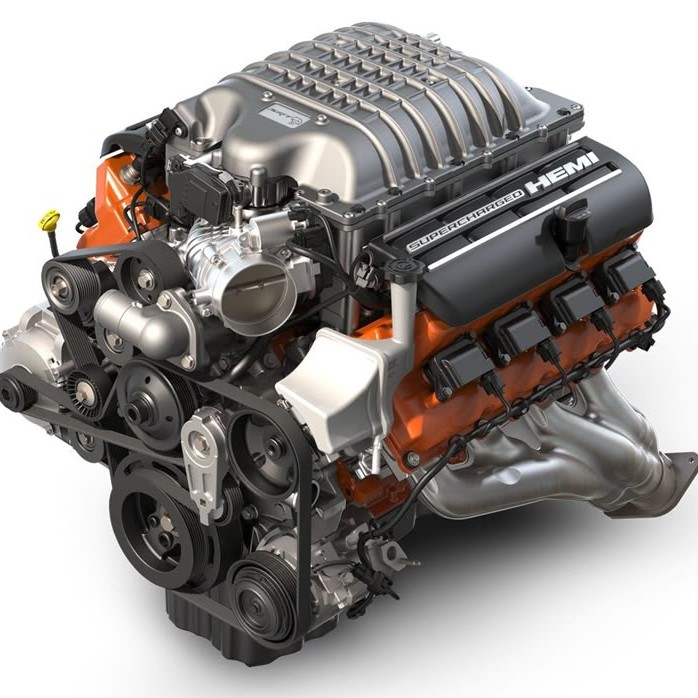What Is a Hemi Engine?
What is a hemi engine? A Hemi engine, short for hemispherical combustion chamber engine, stands out in the automotive world. The name ‘Hemi’ signifies the half-sphere design of the chamber. This unique shape allows for efficient air flow and fuel burning. With valves placed on opposite sides of the chamber, the design optimizes the movement of gasses in and out of the engine. The Hemi engine is famous for its power and efficiency. It offers a high level of performance, making it a favorite choice for muscle cars and high-performance vehicles. Car enthusiasts favor the Hemi engine for the distinct roar it makes when accelerating. In summary, a Hemi engine features a hemispherical combustion chamber, improved gas flow, topped-off power, and a signature sound.

History and Evolution of Hemi Engines
What is a hemi engine? The Hemi engine has a storied past, tracing back to the early 20th century. It was first developed during WWII to power aircraft. After the war, this technology transitioned to the automotive industry. In the 1950s, the first Hemi engines emerged in cars, offering more power. These are known as the Gen1 Hemi engines.
As years passed, the design improved. The Gen2 Hemi, also called the “426”, became legendary in 1964. It powered iconic muscle cars and was a staple in racing. By the 1970s, due to rising gas prices, the production of Hemi engines slowed down.
Chrysler revived the Hemi in the early 2000s with the Gen3, also known as the 5.7L Hemi V8. This modern version had better fuel efficiency and emissions control. It suited new-age vehicles that demanded cleaner technologies without losing the classic Hemi power. Today’s Hemi engines maintain the hemispherical chambers but with advancements like variable valve timing and cylinder deactivation. These features have kept the Hemi engine relevant and desired among enthusiasts and everyday drivers alike.
The Design Principles Behind Hemi Engines
The Hemi engine’s design centers on its hemispherical combustion chamber. This unique shape serves three main purposes: optimizing combustion, improving airflow, and enhancing performance. Let’s delve into the principles that make Hemi engines stand out.
Hemispherical Combustion Chamber
The half-sphere shaped chamber in a Hemi engine allows for more efficient burning of fuel. Its design creates a surface area that is ideal for the ignition of fuel and air mixture. Compared to flat-head or wedge-shaped chambers, the hemispherical shape minimizes heat loss and maximizes power output.
Optimized Valve Placement
With the valves positioned on opposite sides of the chamber, the Hemi engine design ensures optimal airflow. This placement allows for larger valves and an unobstructed path for the air to enter and exit the chamber, boosting the breathing capability of the engine.

Increased Thermal Efficiency
The layout of a Hemi engine promotes better thermal efficiency. Because of the domed chamber, the flame path is shorter. This results in a faster and more even spread of the flame, contributing to the thorough combustion of fuel and a decrease in energy loss.
Advantages of Improved Airflow
Enhanced airflow means that the engine can take in more air and expel exhaust gases more quickly. This leads to an increase in the engine’s ability to ‘breathe’ which, in turn, boosts its power output. The effective removal of exhaust gases also helps prevent pre-detonation, which is critical to maintaining engine health and efficiency.
In summary, the Hemi engine’s design principles cater to performance by maximizing combustion efficiency, optimizing valve placement, fostering thermal efficiency, and promoting superior airflow. These characteristics contribute to its remarkable power and durability, making it the engine of choice for many high-performance vehicles.
Performance Advantages of Hemi Engines
The Hemi engine design leads to several performance benefits that make it stand out from other engine types. Here are the key advantages:
Power and Efficiency
The hemispherical combustion chamber allows for efficient fuel burning. This means more power without wasting fuel. Cars with Hemi engines tend to deliver higher horsepower and torque.
Quick Acceleration
Thanks to improved airflow and combustion, Hemi engines provide quick acceleration. This is why they’re often found in muscle cars and performance vehicles. The instant response is a valued feature for drivers who crave speed.
Durability
Hemi engines are known for their longevity. Their robust construction and effective combustion process reduce wear and tear, extending the engine’s life.
Sound Profile
The distinctive roar of a Hemi engine is music to the ears of car enthusiasts. This sound profile is not only enjoyable but also a sign of the engine’s power capabilities.
In conclusion, Hemi engines offer a blend of power, efficiency, reliability, and an unmistakable sound that appeals to both everyday drivers and auto aficionados. These performance advantages help maintain the Hemi engine’s reputation as a top choice for high-performance applications.
Hemi Engine Applications in Modern Vehicles
Hemi engines are not just a part of history; they continue to power modern vehicles. Thanks to their design, these engines offer a unique combination of performance and efficiency attractive to many automakers.

Muscle Cars and Performance Vehicles
Muscle cars often come equipped with Hemi engines, delivering the high horsepower and torque that enthusiasts crave. Dodge Charger and Challenger models, for instance, boast Hemi engines that provide drivers with exhilarating performance and acceleration.
Trucks and Large SUVs
Beyond sports cars, Hemi engines serve as the powerhouse for trucks and large SUVs. The RAM 1500 truck uses the powerful 5.7L Hemi V8 engine, enabling the vehicle to tow and haul substantial loads with ease.
Everyday Driving Vehicles
Hemi engines are also found in more conventional cars, blending power with everyday functionality. These engines give drivers the benefits of a strong performance while maintaining reasonable fuel economy for daily commutes.
Specialty and Limited Editions
Automakers occasionally release special edition models with Hemi engines. These limited-run cars often become collector’s items, valued for their unique engine characteristics.
The application of Hemi engines in modern vehicles underlines their versatility. They enhance a broad range of vehicles, from thundering muscle cars to hard-working trucks, and even dependable family vehicles. The enduring appeal of Hemi engines in the automotive market is a testament to their performance, efficiency, and reliability.
Comparing Hemi Engines to Other Engine Types
When evaluating engine technologies, the Hemi engine often comes into comparison with other types. The most common comparisons involve flat-head, overhead valve (OHV), and overhead cam (OHC) engines. Let’s look at how Hemi engines stack up against these types.
Against Flat-Head Engines
Flat-head engines, once widely used, have a simpler design with valves located next to the pistons. However, Hemi engines surpass flat-head designs in power and efficiency due to better airflow and combustion.
Against OHV Engines
OHV engines, also known as pushrod engines, have been a staple in American cars. While they are known for their durability and ease of maintenance, Hemi engines offer greater power and combustion efficiency.
Against OHC Engines
OHC engines boast improved performance over OHVs because of their direct valve actuation. Yet, Hemi engines compete closely by delivering comparable power with potentially less complexity.
In summary, Hemi engines usually provide better power output and efficiency due to their unique design features. They maintain a competitive edge in terms of performance, despite advances in other engine types. Car buyers and enthusiasts who value power and a classic engine roar often choose Hemis over the alternatives.

Maintenance and Care for Hemi Engines
Hemi engines are renowned for their impressive power and efficiency, but to keep them performing at their best, regular maintenance is essential. Below are crucial tips for taking care of your Hemi engine:
Regular Oil Changes
Importance of Oil Changes: Frequent oil changes are vital to prevent engine wear and optimize performance.
Role of Oil: The oil serves to lubricate moving parts, preventing friction and overheating which can lead to engine damage.
Air Filter Replacement
Breathing Easy: Regularly replacing the air filter ensures that your Hemi engine can breathe easily.
Contaminant Prevention: A clean air filter effectively blocks contaminants from entering the engine, enhancing its overall efficiency.
Spark Plug Maintenance
Regular Checks: Periodically check the condition of your spark plugs and replace them as necessary.
Efficiency of Combustion: Good spark plugs are crucial for efficient combustion processes in Hemi engines, affecting fuel efficiency and power output.
Cooling System Checks
Prevention of Overheating: Monitoring the cooling system is essential to prevent engine overheating.
Coolant Levels and Radiator Condition: Regularly check coolant levels and inspect the radiator for any signs of issues, ensuring the engine remains at optimal operating temperatures.
Valve Adjustment
Proper Engine Function: Ensuring that valves are correctly adjusted is critical for the engine’s performance.
Performance Issues: Misaligned valves can lead to various performance issues, including reduced power and increased fuel consumption.
Timing Belt Inspections
Check for Wear: Inspect the timing belt for any signs of wear and tear during your maintenance routine.
Risk of Engine Damage: A snapped timing belt can cause significant damage to the engine, making regular inspections vital for long-term reliability.
By incorporating these essential maintenance steps into your routine, you can help ensure that your Hemi engine continues to deliver high performance and reliability. Additionally, always refer to your vehicle’s manual for specific care instructions and recommended maintenance schedules tailored to your engine model.
Common Applications of Hemi Engines
Hemi engines are often found in high-performance vehicles where power matters most. One of the most well-known brands associated with hemi engines is Chrysler. Since reintroducing the hemi in 2003, Chrysler has used it across many of its Dodge and Ram models. Popular examples include the Dodge Challenger, Dodge Charger, and Ram 1500. These vehicles rely on the hemi’s strong torque and horsepower to deliver thrilling acceleration and towing capability.
Beyond street cars, hemi engines have a strong presence in motorsports. Historically, the 426 Hemi was banned from NASCAR in the late 1960s because it was simply too dominant. It later returned in modified form and continues to be a favorite among drag racers and hot rodders. The hemi’s ability to handle forced induction setups—like superchargers and turbochargers—makes it a go-to option for enthusiasts looking to push performance limits.
Additionally, hemi engines appear in marine and industrial applications. Some boat manufacturers use hemi-powered engines for their durability and power delivery. Off-road vehicles and commercial trucks also benefit from hemi technology, especially when hauling heavy loads or operating in extreme conditions. Though not typically found in compact or hybrid vehicles due to size and fuel consumption considerations, hemi engines hold a strong niche in the performance and utility markets.
As automotive trends shift toward electrification, the future of the hemi engine remains uncertain. However, with advancements in fuel-saving tech like cylinder deactivation and hybrid integration, there’s potential for the hemi to evolve alongside emerging trends. Whether in classic muscle cars or modern performance machines, the hemi engine continues to play a vital role in automotive culture.
The Future of Hemi Engine Technology
As we look ahead, the future of Hemi engine technology seems as vibrant as its past. Advancements in automotive engineering are shaping the next generation of Hemi engines to meet modern demands for power alongside efficiency and environmental responsibility.
Keeping Up with Environmental Regulations
Future Hemi engines will have to comply with strict environmental regulations. Manufacturers are exploring ways to reduce emissions while maintaining the engine’s high performance. This might involve hybrid technologies or advanced emission control systems.

Technological Innovations
We can expect technological innovations such as improved fuel injection systems or the integration of electric motors to boost power and efficiency. These advancements will ensure Hemi engines stay relevant in an industry moving towards electrification and hybridization.
Continual Performance Enhancements
The pursuit of performance is still at the heart of Hemi engine development. Engineers are working on enhancing the hemispherical design and optimizing combustion processes to squeeze out even more power.
Adaptability to Alternative Fuels
The adaptability of Hemi engines to alternative fuels like biofuels or E85 ethanol could be a significant advantage. Using alternative fuels can help reduce dependency on traditional gasoline while keeping the distinctive Hemi performance.
The Hemi engine has a solid foundation, and its adaptability to changes in technology and fuels will likely ensure its continued presence in the automotive landscape. It remains to be seen how these engines will evolve, but the focus will be on eco-friendly innovation without sacrificing the legendary Hemi roar.
Final Thoughts
To answer the question what is a hemi engine, we can say it’s more than just a type of combustion engine—it’s a symbol of performance, engineering excellence, and American automotive history. From its origins in the 1950s to its modern-day adaptations, the hemi engine has remained a powerhouse in the world of high-performance vehicles. Its unique hemispherical combustion chamber design allows for better airflow, more efficient combustion, and greater resistance to knocking, all of which contribute to impressive power and durability.
Whether you’re behind the wheel of a modern muscle car or reading about the dominance of the 426 Hemi in racing history, the impact of this engine cannot be ignored. Despite evolving toward greener technologies, automakers continue to refine the hemi engine to keep it relevant in today’s market. Innovations like cylinder deactivation, variable valve timing, and direct injection have helped bring the hemi into the 21st century without sacrificing its signature strength.
Understanding what a hemi engine is opens the door to appreciating decades of automotive advancement. So, whether you’re a car lover, a student of mechanical engineering, or someone shopping for a powerful truck or sedan, knowing the value of hemi engine technology can help you make smarter choices. After all, when it comes to raw power and performance, few engines stand the test of time quite like the hemi.